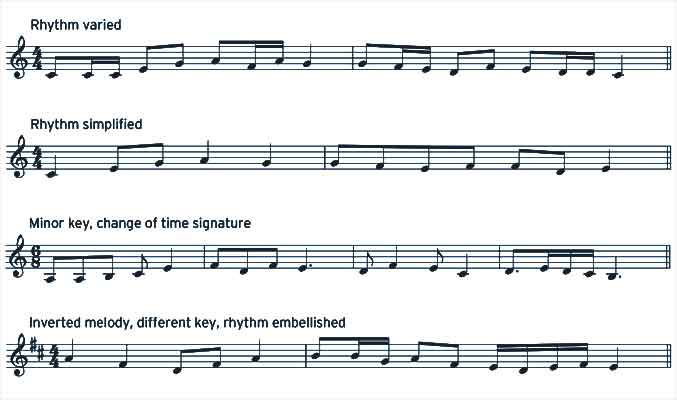Musical composition is the art of creating music. It is a complex process that involves using different musical techniques to create a unique piece of music. A composer must have a deep understanding of musical theory, harmony, melody, rhythm, and form to create music that is aesthetically pleasing and emotionally compelling. In this article, we will explore some musical techniques that composers use to create music.
- Harmony
Harmony refers to the simultaneous sounding of two or more musical notes. It is an essential element of music that provides the foundation for melody and rhythm. Composers use different chord progressions, harmonies, and dissonances to create a unique sound.
For example, a composer may use a minor key to create a melancholic mood or a major key to create a happy and uplifting feeling. They may use complex chords and harmonies to create a sophisticated sound or simple harmonies for a more straightforward and easy-to-follow melody. - Melody
Melody is the part of the music that is most memorable and easy to remember. It is a sequence of notes that form a tune or theme. Composers use different techniques to create a unique melody that is memorable and easy to follow.
One technique that composers use to create a melody is repetition. By repeating a musical phrase or motif, the composer can create a memorable melody that is easy to follow. They may also use sequences, where a melodic phrase is repeated at a higher or lower pitch to create a sense of anticipation or resolution. - Rhythm
Rhythm is the pattern of sounds and silences that occur in music. It provides the underlying structure and energy of the music. Composers use different rhythmic patterns to create a unique and memorable sound.
One technique that composers use to create a rhythmic pattern is syncopation. This involves placing accents on off-beats or weaker beats, creating a sense of tension and release. They may also use polyrhythms, where multiple rhythmic patterns are used simultaneously, creating a complex and interesting sound. - Form
Form refers to the structure of a piece of music. It is the way in which the different musical elements are organized and arranged to create a coherent whole. Composers use different forms to create a unique and interesting piece of music.
One form that composers use is the ABA form. This involves creating a musical theme or melody and repeating it twice, with a contrasting section in the middle. This creates a sense of familiarity and contrast, making the music more interesting and engaging.
Another form that composers use is the sonata form. This involves creating an exposition, where the main themes are introduced, a development, where the themes are developed and expanded, and a recapitulation, where the themes are restated in their original form. This creates a sense of tension and resolution, making the music emotionally compelling. - Texture
Texture refers to the way in which different musical elements are combined to create a unique sound. Composers use different textures to create a rich and interesting sound.
One texture that composers use is homophonic texture, where the melody is accompanied by chords or other harmonies. This creates a sense of harmony and balance, making the music easy to follow and understand.
Another texture that composers use is polyphonic texture, where two or more melodic lines are played simultaneously, creating a complex and interesting sound. This creates a sense of richness and depth, making the music emotionally compelling.
In conclusion, musical composition is a complex process that involves using different musical techniques to create a unique piece of music. A composer must have a deep understanding of musical theory, harmony, melody, rhythm, form, and texture to create music that is aesthetically pleasing and emotionally compelling. By using these techniques, composers can create a unique
![]()





